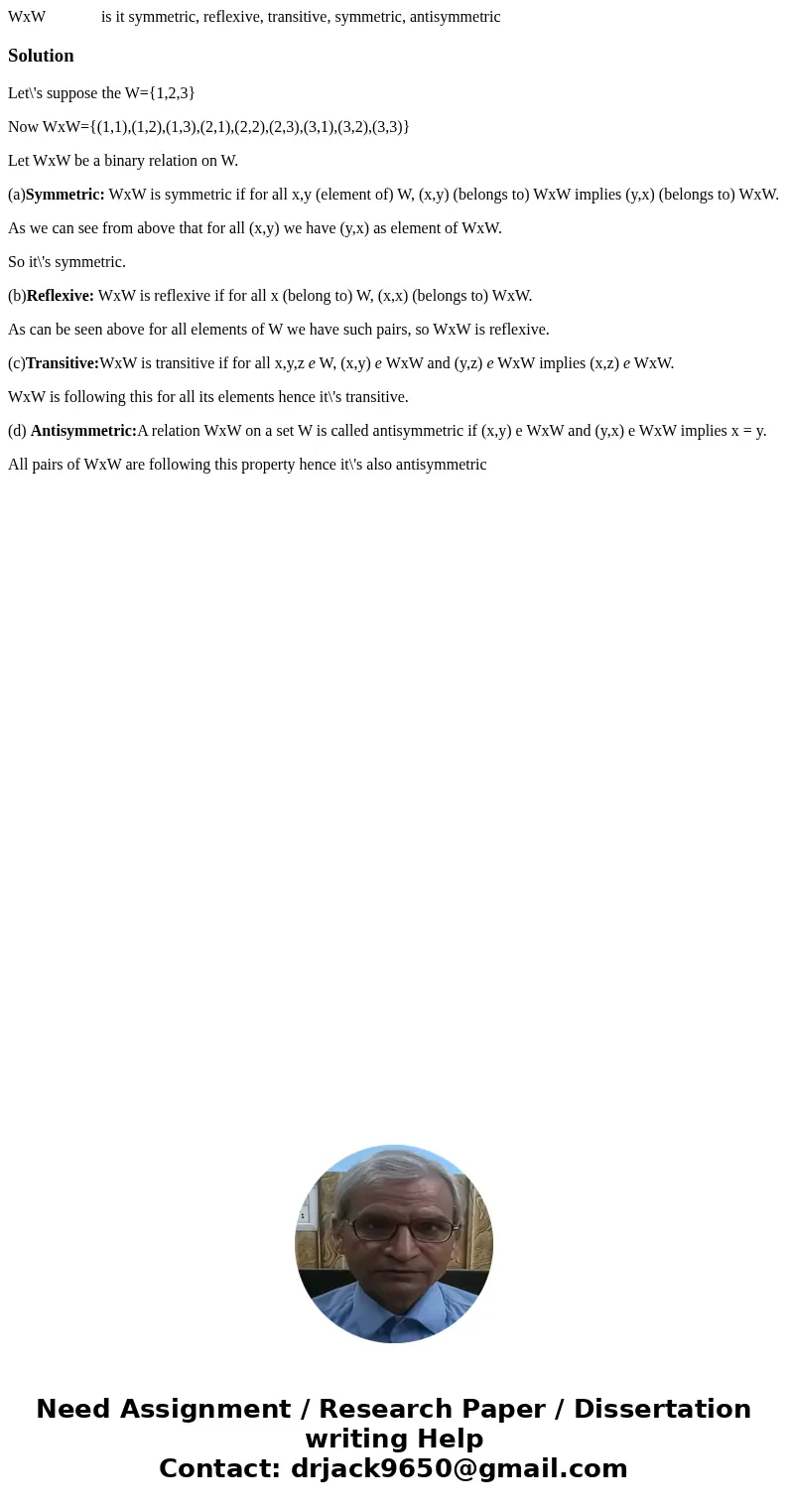WxW is it symmetric reflexive transitive symmetric antisymme
WxW is it symmetric, reflexive, transitive, symmetric, antisymmetric
Solution
Let\'s suppose the W={1,2,3}
Now WxW={(1,1),(1,2),(1,3),(2,1),(2,2),(2,3),(3,1),(3,2),(3,3)}
Let WxW be a binary relation on W.
(a)Symmetric: WxW is symmetric if for all x,y (element of) W, (x,y) (belongs to) WxW implies (y,x) (belongs to) WxW.
As we can see from above that for all (x,y) we have (y,x) as element of WxW.
So it\'s symmetric.
(b)Reflexive: WxW is reflexive if for all x (belong to) W, (x,x) (belongs to) WxW.
As can be seen above for all elements of W we have such pairs, so WxW is reflexive.
(c)Transitive:WxW is transitive if for all x,y,z e W, (x,y) e WxW and (y,z) e WxW implies (x,z) e WxW.
WxW is following this for all its elements hence it\'s transitive.
(d) Antisymmetric:A relation WxW on a set W is called antisymmetric if (x,y) e WxW and (y,x) e WxW implies x = y.
All pairs of WxW are following this property hence it\'s also antisymmetric

 Homework Sourse
Homework Sourse